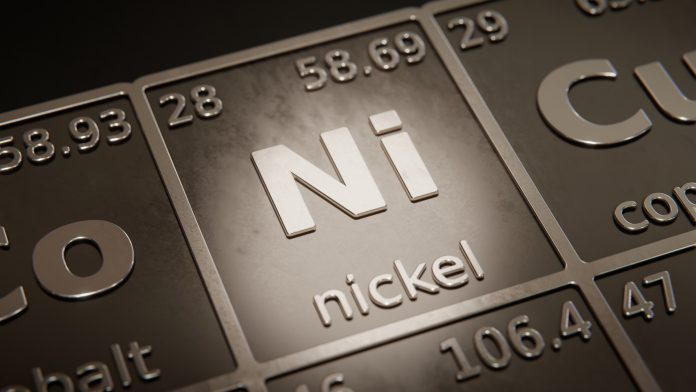Power Nickel recently announced – 19 July 2022 – its initial NI 43-101 compliant mineral resource estimate (MRE) on their ‘Nisk’ Nickel Sulphide project near James Bay, Québec.
The Nisk Project is located south of James Bay, a region that is the site of a number of mining projects (Figure 1) and improving infrastructure (Figure 2).


Power Nickel completed the acquisition of its option to acquire up to 80% of the Nisk Project from Critical Elements Lithium Corp. (CRE: TSXV). The Nisk Project comprises a large land position (20 kilometres of strike length) with numerous high-grade nickel intercepts. Since completion of the option, Power Nickel retained 3DGeo Solution Inc to create a geological model of the Nisk Project and utilised this as a guide to the very successful initial Power Nickel 2,400-metre drill programme completed in December 2021 and reported in March of 2022.
On the basis of this drill programme and the historical drill results, 3DGeo Solution Inc was mandated to produce a NI 43-101 compliant mineral resource estimate and technical report. Engineering work related to defining a constraining pit shell and underground mineable shapes was contracted to InnovExplo Inc. The Highlights of the mineral resource estimate are below. The full technical report, prepared in accordance with the provisions of national instrument 43-101, will be available on SEDAR under the company’s issuer profile within 45 days.

Note: NiEq = Nickel Equivalent, Ni = Nickel, Cu = Copper, Co = Cobalt, Pt = Platinum, Pd = Palladium, Au = Gold, Ag = Silver, % = Percent, g = Gram, t = Metric tonne.
Notes to Accompany Mineral Resource Table:
- The independent qualified persons for the purposes of this mineral resource estimate (MRE), as defined in NI 43-101, are Kenneth Williamson, P.Geo. (OGQ # 1490) and Matthew DeGasperis, P.Geo. (OGQ # 2261), of Solution 3DGéo inc. The effective date of the estimate is May 17, 2022;
- The estimate of the mineral resources of the Nisk Project complies with the ‘CIM Estimation of Mineral Resources and Mineral Reserves Best Practice Guidelines’ of November 29, 2019. The Mineral Resources were estimated in accordance with the Canadian Institute of Mining, Metallurgy and Petroleum (CIM), CIM Standards on Mineral Resources and Reserves, Definitions (2014) and Best Practices Guidelines (2019) prepared by the CIM Standing Committee on Reserve Definitions and adopted by the CIM Council;
- These mineral resources are not mineral reserves since their economic viability has not been demonstrated;
- The resources are presented before dilution and in-situ and are considered to have reasonable prospects of economic extraction. Isolated and discontinuous blocks with a grade greater than the selected cut-off grade are excluded from the estimate of underground mineral resources. The blocks that must be included – such as isolated blocks with a grade below the cut-off grade located within potentially mineable volumes – have been included in the mineral resource estimate.
- As of May 17, 2022, the database included a total of 66 drill holes (59 historic and seven recent 2021 drill holes) totalling 15,266.3 metres of drilling;
- A value of half of the assay lab detection limit for each element was utilised as a grade for the un-assayed core;
- The assays were grouped within the mineralised domains in composites of 1.00 metres in length;
- The block model was prepared using Leapfrog® Geo and Edge software. The block model consists of two-metre parent blocks and sub-blocks of one metre. The block model has a dip azimuth of 340°;
- An interpolation according to the ‘inverse distance squared’ (ID 2) method was performed to estimate the grades in the interpreted mineralised volume;
- An interpolation according to the ‘inverse distance squared’ (ID 2) method was performed to estimate the Density (SG) in the interpreted mineralised volume. Sample intervals with missing SG values were calculated based on a strong correlation with %Ni. The calculation utilised was SG = (0.7001 x %Ni) + 2.6751;
- The ‘Open Pit’ mineral resources are presented at a cut-off grade of 0.33 %NiEq and are confined within a ‘whittle’ pit shell. The underground mineral resources are presented at a cut-off grade of 0.91 %NiEq and are confined within volumes defined utilising a Deswick Shape Optimiser (DSO). These volumes correspond to groups of contiguous blocks with a reasonable size to be exploited by underground mining methods;
- The engineering work required for the cut-off grade estimation and the creation of the DSO volumes were performed by InnovExplo Inc., and the following economic parameters were used: US $8.00/lb Nickel, $3.00/lb Cu, $25.00/lb Cobalt, $1000/Oz Platinum, $1000/Oz Palladium, $1300/Oz Gold, and $17.00/Oz Silver; Exchange rate of USD / CAD 1.30, metallurgical recovery of 85%, total processing cost CA $40.00/t, mining cost CA $6.00/t, mining overburden cost CA $4.20/t, underground mining cost CA $110.00/t, G&A cost CA $12.20/t, northern logistics costs CA $10.00/t. It should be noted that the G&A cost could be underestimated depending on the extraction sequence chosen;
- The independent qualified persons are not aware of any environmental, licensing, legal, title-related, tax, socio-political or marketing-related issue, or any other relevant issue that could have a material impact on the estimate of mineral resources; and
- The numbers of tonnes are rounded to the nearest hundred to reflect uncertainties, which may cause slight differences.
“Power Nickel was extremely pleased with the inaugural Mineral Resource Estimate. When taken in context with our very conservative assumptions and the clear infill drilling opportunities, as outlined below in the two figures showing isometric views of the potential economic pit constrained and underground stope constrained mineral resources, we feel we have shown Nisk has significant commercial potential,” commented Terry Lynch, Power Nickel CEO.
“The resource update has clearly indicated some additional infill drilling is needed and these holes are now in process of being permitted as part of our upcoming fully funded drill programme. We already have permitted several drill targets to the flanks of the current deposit designed to extend the deposit and test new potential pods for additional resources.
“Historically, nickel sulfide deposits do not exist in isolated solo deposits but typically have a string of pearl formation where multiple pearls or pods of resources are congregated in a close geographic area. The next round of drilling will focus on infill drilling targets as outlined by the mineral resources estimate and on this search to extend and discover new nickel pods. We expect drilling to commence in August and to be completed in September.”
Figure 3 demonstrates the grade of the nickel equivalent (%NiEq) mineral resources and Figure 4 reveals the mineral resource classification (indicated and inferred). Note that portions of the deposit still contain unclassified mineral potential and requiring more in-fill drilling to potentially include this in a future updated MRE.


Table 2 demonstrates the different cut-off grade (CoG) sensitivities based on nickel price (+/- 10% and 20% of the base case scenario). The base case scenario is highlighted in light yellow. Table 3 portrays the CoG and correlated nickel metal prices in USD$ per pound.

Note: NiEq = Nickel Equivalent, Ni = Nickel, Cu = Copper, Co = Cobalt, Pt = Platinum, Pd = Palladium, Au = Gold, Ag = Silver, % = Percent, g = Gram, t = Metric tonne; Base Case highlighted in light yellow.










